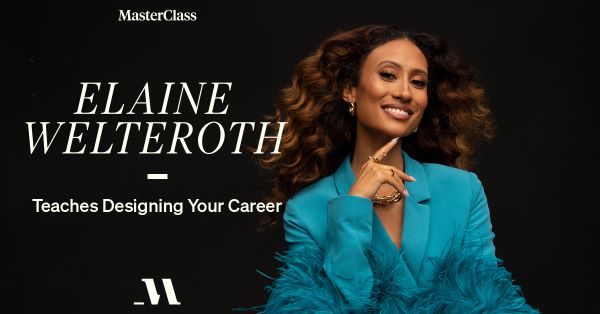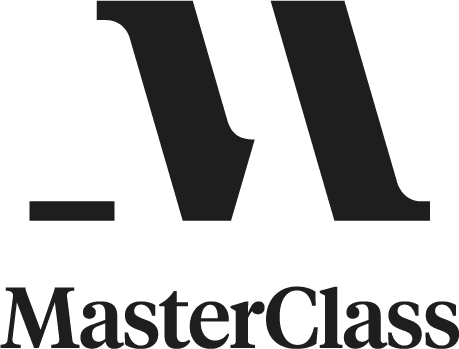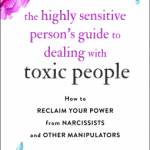‘When the music changes, so must your dance.’
In less than 15 years, Elaine Welteroth has stepped into more career roles and garnered more professional accomplishments than many people do in a lifetime. She’s an award-winning editor and journalist, a New York Times – bestselling author and a television host – and she was tapped as the cultural ambassador for Michelle Obama’s When We All Vote initiative.
At 19, Elaine was appointed editor in chief of Teen Vogue (prior to that, she served as the American
magazine’s beauty director, the first Black woman to hold that role). At the time, she was the youngest person to be named editor in chief in the 100-plus year history of publishing giant
Condé Nast and she was only the second Black person to hold the position.
Mentorship
Countless – The number of times Elaine admits to reaching out to the office of legendary American editor, author, and media personality Harriette Cole at Ebony magazine when Elaine was hoping to land an internship. She ultimately succeeded and went on to work as the magazine’s beauty and style editor for more than three years. To this day, Elaine cites Cole as a major mentor figure and the one who gave her the opportunity that kick-started her career.
Zone of Genius
It’s ‘that sweet spot at the intersection of your passions, your talents, your skills and your values,’ she says. ‘I define your Zone of Genius as that which only you can do like nobody else. It’s almost as unique to you as your fingerprint. And I try to spend as much time as I can in my life operating from there.’
It is at the intersection of your passions, talents, skills, and values. That which only you can do like no other can, it is unique to you as your fingerprint. It becomes your compass when you feel lost and it provides a framework to make you stay focused when it matters the most.
PILLAR 1: PASSION
‘What is that thing that you could do all night, for free, if somebody let you?’
Passion
What you can do all night for free in a state of flow. We’ve been set up not to know what we really love. DO what makes you feel good. Sometimes you are stuck in life, job, city, relationship. No matter where you’ve been, you have crafted some skills that would make you navigate the crisis. Trust the Process.
PILLAR 2: TALENT
‘What gifts do you naturally possess?’
(If you have trouble listing your talents, ask a friend or loved one to write down a list of things that they think you’re good at.)
Talent
- We take our gifts for granted.
PILLAR 3: SKILLS
‘What are those skills that you’ ve had to learn along your journey – the things that often require training and repetition and that sometimes can be cultivated from survival mechanisms?’
Pillar 4: Values
- What matters more to you than money? Why? They are a filter for when you are making hard decisions about what you want to do or not do.
Excavate Your Childhood
- Excavation is the process of digging deep inside yourself to really understand what your most valuable traits are.
Create Your Lane List
When Elaine looked at the career of her future mentor, American magazine editor and writer Harriette Cole, she identified several lanes – ‘industries or different spaces’, Elaine says – that Cole ran in: magazines, books, radio, TV and consulting, among others.
Pick Your Lanes
As you start thinking about your long-term career goals, jot down a list of all of the lanes you want to explore. If you have trouble coming up with the various industries or spaces, take a cue from Elaine and think about people whose careers you admire. See if you can break down their lives and careers into different lanes and then use that Lane List as a jumping-off point for yourself.
How to Tell a story with your resume
Weave a narrative that shows growth, overcoming obstacles, and alignment with a company’s mission and goals
Résumés
They can make or break whether you land an interview and, ultimately, if you get the job. While fundamentally a résumé is meant to depict your professional and academic history and achievements in the strongest possible light, it can also be a critical tool for telling a compelling story that connects your background with a company’s mission statement and its objectives for the role you’re interested in.
Your résumé needs to share concrete examples of past projects, accomplishments, and growth that collectively create a narrative that positions you as the ideal candidate for a job.
ALIGN YOUR OBJECTIVES
Many résumés include either an ‘objectives’ or ‘summary’ statement that sketches out your overarching career goals and outlines your major skills and experience. This can be a great opportunity to position your objectives so that they complement the organisation’s mission and the qualifications of the particular role.
SHOW GROWTH
Besides highlighting your promotions and the accrual of additional responsibilities over the years, an effective résumé will explain how you’ve contributed to the growth of the companies for which you’ve worked. In a line or two beneath each job title you’ve held, share real-life examples of how you specifically benefited the company. For example, if you worked in online publishing as a writer, highlight an impressive metric about how much online traffic your articles generated. Or if you worked in social media marketing, pull out some key figures showcasing how many followers joined the brand’s channels during your tenure or how much money was generated in sales via your social media posts.
ILLUSTRATE HOW YOU OVERCAME OBSTACLES
While a résumé is not an appropriate place to include any intra-workplace conflicts you may have experienced or proprietary information about obstacles the company faced, it can be a good chance to point out any industrywide problems or hindrances and how you contributed to the company’s ability to push past them. Let’s say you worked in sales for a beverage company that introduced a new product into a market saturated with similar ones. You could share how, over time, you helped the company not only break into the market but also increase its share of it. Experiences like these indicate to a future employer that you are both capable of doing the work the role requires and able to contribute to the bigger picture: the company’s future success.
ADDRESS THE ROLE’S REQUIREMENTS
Although the core of your résumé will likely remain the same no matter what role you apply for, you should avoid a one-size-fits-all approach. Instead, carefully look over the qualifications and skills a company lists alongside a job description and try to sprinkle examples of them throughout your résumé. For instance, if a role requires superb writing skills, try to weave in some concrete examples of projects you worked on that involved lots of writing.
THE ART OF THE INFORMATIONAL INTERVIEW
Meeting Up with People whose careers you admire can be the gateway to mentorship: New Opportunities and Industry Insight
MAKE A LIST
Write down the names of people whose careers you admire, whose skills you value, and whose insights you seek. While you don’t necessarily have to decide whether each person on your list is a future peer, boss, mentor or something else, it’s a good idea to have those thoughts in the back of your mind.
ARRANGE AN INTRODUCTION (IF YOU CAN)
Even if you don’t know the people on your list personally, there’s a chance you may have a friend, former colleague or classmate in common. If so, get in touch with that mutual contact and ask if they would make an introduction. If you don’t have any mutual contacts, that’s okay, too. Most people have 15 minutes to spare, even for someone they’ve never met – particularly if you offer to meet them at a time and place at their convenience.
How to get the most out of a mentorship
The best mentor-mentee relationships are symbiotic
The simple truth is that being mentored is a skill. It’s not one that’s difficult to master, but it does require taking an active role. It’s important when seeking out a mentor that you have clear goals and expectations for the relationship. And it’s also important to be realistic. While you may envision yourself meeting or talking with your mentor every week, it could often be once a month or even once a year. Mentorship is a slow and gradual process. Good mentees recognise this and are willing to commit to the relationship, knowing that while they may see some immediate benefits, the real payoff happens over years – not days.
Create Mentorship Goals
Identify the top five hopes you have for a mentor-mentee relationship and jot them down in a notebook or elsewhere. Now, identify the top five things that you could offer to that same relationship, whether it’s a special skill, talent, personality trait, or even a hobby.
Getting out of a rut
If you find yourself feeling stuck in your career or relationships, you’re not alone. Often this rut is a symptom of burnout – maybe you’ve been firing on all cylinders for so long that you’re depleted and have lost your ability to find creative inspiration, motivation, or fulfillment.
MAKE AN APPOINTMENT WITH JOY
Sometimes the rut you’re in can simply be a feeling of being overwhelmed. You may be asking yourself why you need a break when you need to make progress on a task, but sometimes unplugging for a bit can be just what you need to recharge your batteries.
Elaine recalls the advice her friend, the author Priya Parker, gave her to ‘make an appointment
with joy.’ ‘Literally, put an appointment on your Google calendar…and when that invite pops up, treat it like you would any other meeting,’ Elaine explains. ‘Show up on time, don’t skip it, don’t cancel it last minute. Be there, and be present for that invitation to experience joy in the moment.’
The things that bring each of us joy are personal, so take a moment and think about what delights you, fulfills you, or energizes you. It could be reading a good book, having a solo dance party, going for a jog, talking to your mom, baking some cookies – anything.
Create Opportunities for Joy
Open a journal and spend at least 10 minutes describing your perfect day. It doesn’t have to include spending money or even leaving the house – it just has to include any number of things that make you happy (sights, sounds, smells, relationships). Next, think about how you can incorporate some of those things into your daily life. Start blocking off time on your calendar – on your computer, your phone, a datebook, however you keep appointments – and schedule time for joy. When the time comes, don’t flake and don’t cancel.
FIND COMPASSION FOR YOURSELF
Self-acceptance can go a long way towards improving our mental outlook and happiness, but for many of us, it’s not something that happens overnight. One of the best ways to kick-start your journey towards self-acceptance is by adopting compassion and grace towards yourself, your
flaws, and even your past mistakes.
We all suffer from negative thoughts and self-defeating impulses from time to time, but instead of dwelling on what we did wrong or could have done differently, we should adopt an outlook that says we did the best we could given our circumstances. This mental shift can, over time, lead to a healthier and happier relationship with ourselves, one that propels us forwards and helps us find contentment.
LIGHTEN YOUR LOAD
Are you stuck? Or are you trying to be everything for everyone else but yourself? Sometimes the best way to get ‘unstuck’ is to remove items from your plate that don’t serve you, don’t concern you or that you didn’t add to your plate to begin with! Delegation can be one of the most important tools for your mental health.
TALK TO SOMEONE
If you feel like you’ve been in a rut (creative or otherwise) for an extended period, it may be time to talk to someone professionally to help you through it. This could be a therapist, a life coach or a career coach who can help you with strategies for improving your mental health.
If you stay in the same place too long and you overstay your welcome, whether in a job or a relationship that is no longer serving you, the consequences could be detrimental. At some point it becomes scarier to stay where you are and to stunt your development and evolution than it is to take a bet on yourself and go into the unknown, where you can continue to blossom and grow into the person you were meant to be.
How to Make a Career Pivot
Know when – and How – To embrace change can make all the difference.
Making a career switch can feel daunting – especially if nothing is ‘wrong’, per se, at your current job. But your work life doesn’t have to be falling apart for a pivot to be in order. Perhaps you’ve simply stopped learning in your current position. Or maybe there’s no upward mobility. Or maybe your dayto-day tasks feel less than inspiring. In other words, as Elaine puts it more concretely, it may be time to move on from your current job when you’ve ‘reached the point of diminishing returns.’
Selling Yourself: How to overcome anxiety around self-promotion
Among many common fears you may have are things like ‘I’m not good enough,’ ‘the work is not perfect,’ ‘I don’t have anything valuable to share.’ These concerns may be compounded by feelings of ‘impostor syndrome’, experiences with microaggressions, challenges with code-switching or environments in which you’re F.O.D. – an acronym for First. Only. Different. that was coined by American TV writer and creator Shonda Rhimes
CODE-SWITCHING: ‘Using different voices in different social contexts because you don’t feel comfortable expressing your authentic self.
F.O.D.: ‘Shonda Rhimes defined this term F.O.D. – or First. Only. Different. – in her book Year of Yes. She described F.O.D. as this tribe of people who are first in their field or in their family to do what they’re doing, the only one who looks like them in the room and/or just plain old different.’
IMPOSTOR SYNDROME:
‘It’s that nagging feeling that you’re not enough, even when all evidence points to the contrary.’
MICROAGGRESSIONS:
‘These are those little slights that, whether intentional or unintentional, can make people from underrepresented communities feel othered, inferior, or just plain shitty.’
Mentioned Books
- More Than Enough: Claiming Space for Who You Are (No Matter What They Say) by Elaine Welteroth
- The Art of Gathering: How We Meet and Why It Matters by Priya Parker – Joy Container
- Year of Yes: How to Dance It Out, Stand In the Sun and Be Your Own Person – by Shonda Rhimes – First, Only, Different
MasterClass is a streaming platform that makes it possible for anyone to learn from the very best. MasterClass is an online membership – accessible on your phone, web, Apple TV, Roku devices, and Amazon Fire TV – that offers classes on a wide variety of topics taught by 90+ world-class masters at the top of their fields.
Their immersive learning experiences combine incredible video content, downloadable materials, and social interaction with the MasterClass community, all of which users can explore at their own pace.
The annual membership is available for $180 USD, which allows unlimited access to ALL on demand MasterClass content for the year
Give One Annual Membership. Get One Free.
All the best in your quest to get better. Don’t Settle: Live with Passion.
For More Information: MasterClass Home Page
All the Best in your quest to get Better. Don’t Settle: Live with Passion.





Comments are closed.